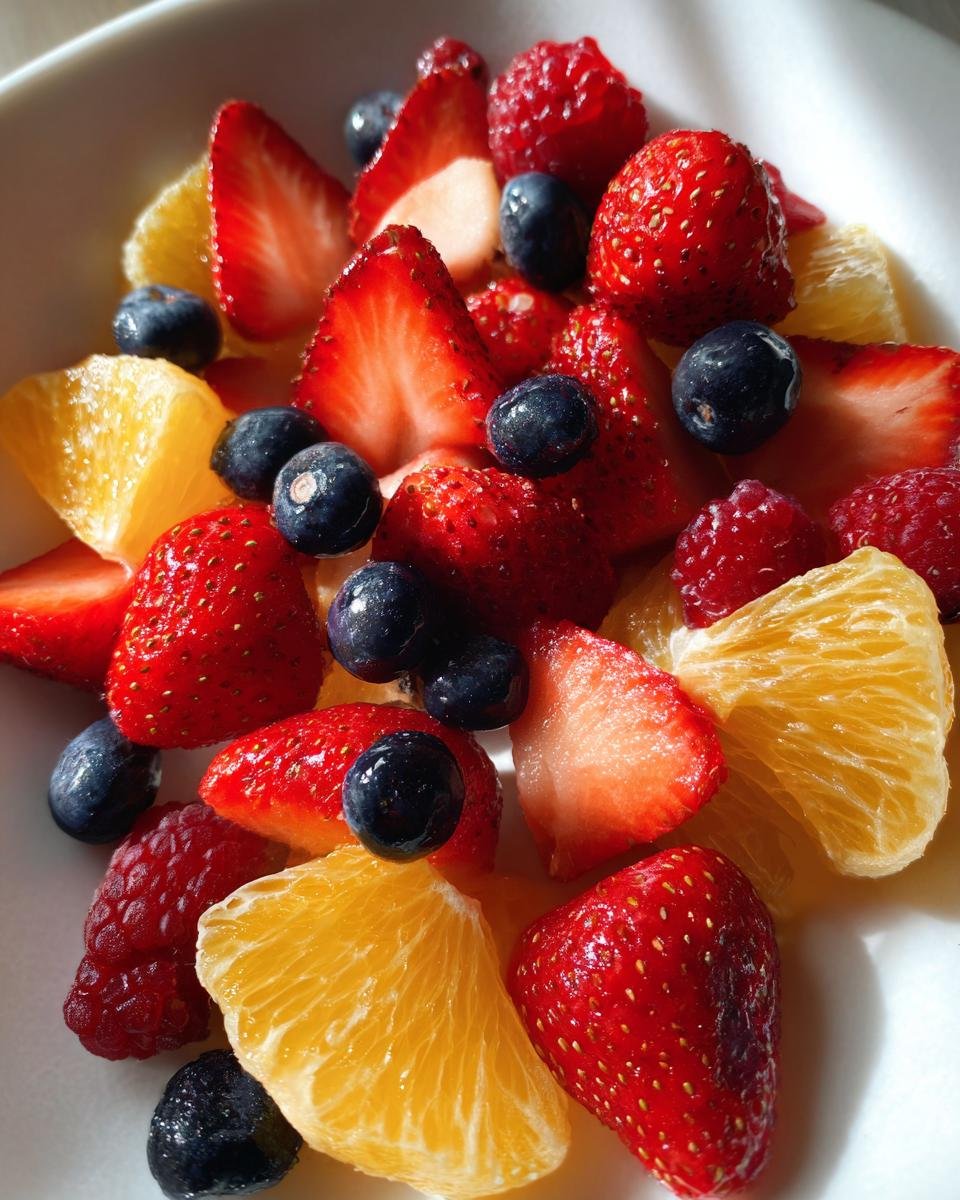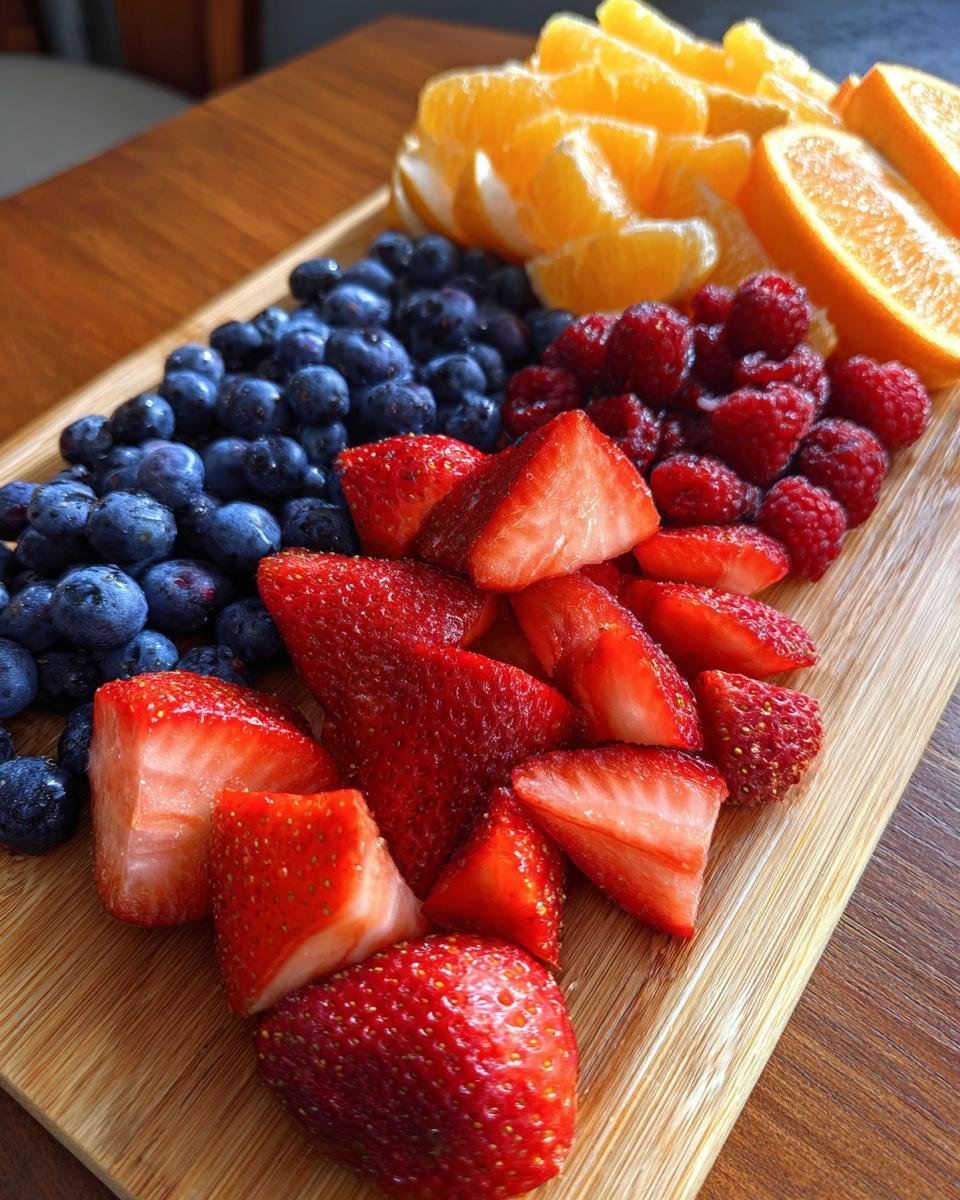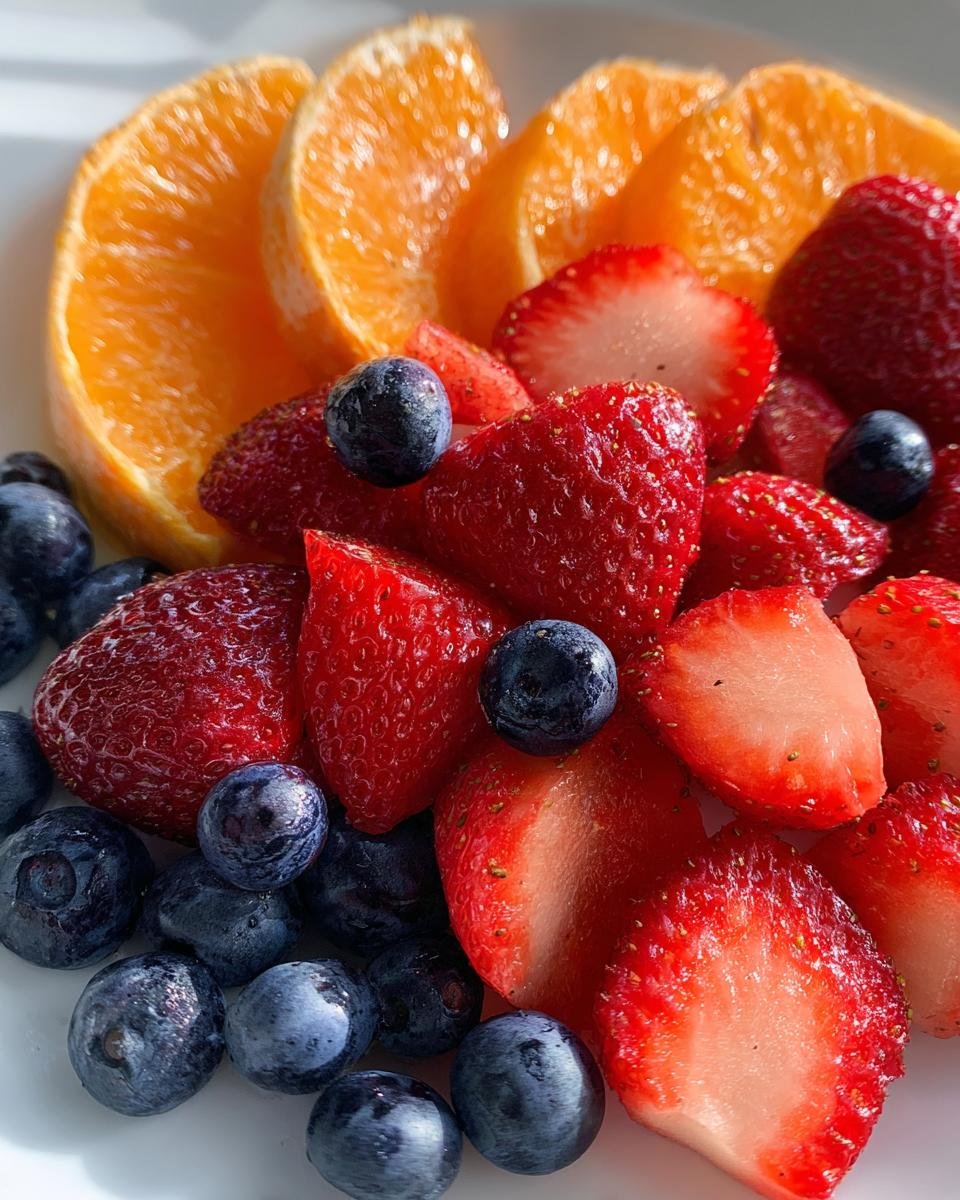Okay, let’s talk fruit! I don’t know about you, but for the longest time, I felt like I was getting mixed messages. One minute, fruit is the ultimate health food, packed with vitamins and all that good stuff. The next, someone’s whispering about “sugar” and making you second-guess that juicy apple. It’s enough to make your head spin, right?
Well, I’ve been digging into this because, honestly, I *love* my fruit, and I wanted to really understand what’s going on. That’s how I stumbled into exploring **The Surprising Sugar Content of Fruits**. It’s not quite as simple as just looking at the sugar number on a label, and that’s the exciting part!
We’re going to dive into why the sugar in a piece of fruit is totally different from the sugar you find dumped into a soda or a packaged cookie. Understanding this difference is HUGE for making smart choices about what we eat. I’m no registered dietitian, but years of cooking and learning about what fuels my body has taught me that knowing the *why* behind the food is just as important as knowing how to cook it. Let’s clear up some confusion and embrace our fruit!
Why You’ll Love Understanding The Surprising Sugar Content of Fruits
So, why bother digging into the nitty-gritty of fruit sugar? Because it’s going to make you feel so much more confident about what you’re putting on your plate! Seriously, knowing this stuff is empowering. Here’s what you’ll get out of it:
- You’ll finally feel clear and confident about eating fruit again (hooray for that!).
- You’ll understand exactly where fruit fits into a healthy, balanced diet – and it’s a pretty awesome spot!
- We’ll bust some of those confusing myths about fruit being “bad” because of sugar.
- You’ll be able to make truly informed choices, not just follow trendy rules.
It’s all about getting the real scoop so you can enjoy your delicious fruits without the guilt or confusion. Trust me, it’s a game-changer!

What Makes Up The Surprising Sugar Content of Fruits?
Alright, let’s get to the heart of it. When we talk about the sugar in fruit, we’re mostly talking about natural sugars. The main one you’ll find is **fructose**. There’s usually a little bit of glucose and sucrose in there too, but fructose is the star of the show in most fruits. This is sugar that’s just *there* in the fruit, naturally occurring as it grows and ripens. It’s not something someone added in a factory somewhere.
This is a HUGE contrast to *added* sugars. Those are the sugars that are put into processed foods and drinks during manufacturing – think high-fructose corn syrup in soda or table sugar in cookies. Your body processes these added sugars very differently because they often come without any of the good stuff that fruit brings to the table.
And that’s the real magic trick of fruit sugar! It doesn’t come alone. Fruit is packed with **fiber**, vitamins, minerals, and antioxidants. That fiber is a game-changer. It helps slow down how quickly your body absorbs the sugar, preventing those crazy blood sugar spikes you might get from a sugary drink. So, while yes, fruit has sugar, it’s bundled up with all these other amazing nutrients that make it a totally different ballgame compared to just eating plain sugar.

The Surprising Sugar Content of Fruits: A Look at Popular Choices
Okay, let’s get practical! What does this mean for the fruits we actually eat every day? It’s super helpful to have a general idea of which fruits land where on the sugar spectrum. But remember, even the “higher sugar” fruits are still nutrient powerhouses! It’s all about balance and context, just like everything else in cooking (and life!).
Think of it like this: a cup of strawberries is going to have a different amount of sugar than a cup of mango. Doesn’t make one “bad” and the other “good,” just different! Knowing these differences helps you mix things up and get a wide range of vitamins and flavors.
So, let’s peek at a few favorites and see what their **surprising sugar content** looks like. This isn’t a strict rulebook, just a little guide to help you navigate the produce aisle with confidence!
Lower Sugar Fruits
These are the guys often highlighted for having less natural sugar, and they’re fantastic! Think lovely, vibrant **berries** like strawberries, blueberries, raspberries, and blackberries. They’re generally lower in sugar and absolutely packed with antioxidants and fiber. **Avocados** are technically a fruit, and they’re super low in sugar while being full of healthy fats. And **lemons** and limes? Very low sugar, and they add amazing brightness to food and drinks!
Higher Sugar Fruits
Now, these are the sweeter delights! Fruits like ripe **bananas**, sweet **dates**, and tropical **mangoes** definitely have a higher sugar content per serving. But oh, the nutrients! Bananas give you potassium, dates are full of fiber and minerals, and mangoes are loaded with Vitamin C. They’re wonderful sources of energy and nutrients, especially before or after a workout, or when you just want something naturally sweet. Enjoy them, just maybe be mindful of portion sizes if you’re watching your sugar intake closely.
Integrating The Surprising Sugar Content of Fruits into a Balanced Diet
Now that we’ve chatted about the sugar in fruit, how do we actually make it work for us in our everyday meals? It’s all about fitting these amazing, nutrient-packed goodies into your overall eating plan. And honestly, it’s pretty simple and delicious!
My biggest tip? **Moderation and variety!** Don’t just stick to one type of fruit. Eat the rainbow! Different colors mean different nutrients, so mix up your berries, your melons, your citrus. A handful of grapes one day, half a banana the next, maybe some sliced apple with peanut butter. Speaking of peanut butter…
Pairing fruit with a little bit of **protein or healthy fat** is a fantastic trick. That fiber in the fruit already helps, but adding protein or fat slows down digestion even more. Think apple slices with almond butter, berries stirred into Greek yogurt, or even some avocado on whole-wheat toast (yep, fruit!). This helps keep your blood sugar levels steadier and keeps you feeling full longer.
And please, please, please: **Choose whole fruit over fruit juice** most of the time. Juicing strips away a lot of that precious fiber that helps manage the sugar absorption. You get all the sugar hit without the fiber benefits. A small amount of 100% juice is okay sometimes, but biting into a whole apple or pear is always the better bet!
Understanding Fruit Sugar vs. Added Sugar
Okay, let’s circle back to this because it’s *so* important and where a lot of the confusion comes from. The natural sugars in fruit, mainly fructose, are processed by your body totally differently than the added sugars you find in junk food. Why? Because of that incredible **fiber** we talked about!
When you eat a whole piece of fruit, the fiber acts like a speed bump for the sugar. It slows down how quickly it hits your bloodstream, so you get a more gradual release of energy. Added sugars, on the other hand, usually come in a package with no fiber or other nutrients. They hit your system fast and can cause those quick spikes and crashes.
Think of it like this: eating an orange is like taking a scenic route with gentle hills. Drinking a sugary soda is like taking a rocket ship straight up! Big difference in how your body handles the ride.
Frequently Asked Questions about The Surprising Sugar Content of Fruits
I get asked a lot of questions about fruit and sugar, and it totally makes sense! There’s so much conflicting info out there. Here are some of the most common ones I hear, and hopefully, these answers will clear things up for you too!
Is Fruit Sugar Bad for You?
Okay, deep breath! In the context of *whole* fruit, no, the natural sugar isn’t “bad” for you. Remember all that amazing fiber, vitamins, and antioxidants we talked about? They change the whole picture! Your body processes the sugar differently because of those nutrients. The problem comes when you’re consuming *added* sugars in processed foods, which lack those beneficial components. Enjoy your whole fruit!
Can Diabetics Eat Fruit?
This is a really important question, and the answer is generally YES, but with a big emphasis on moderation and making smart choices. Fruit can absolutely be part of a healthy diet for people with diabetes. It’s best to focus on fruits with more fiber and a lower glycemic index, like berries or apples. Portion size is key, and pairing fruit with protein or fat can help. But always, always talk to your doctor or a registered dietitian for personalized advice! They know your specific needs best.
How Much Fruit Should I Eat Daily?
General guidelines often recommend about 1.5 to 2 cups of fruit per day, but this can vary based on your age, activity level, and overall dietary needs. The most important thing is to focus on **variety**. Don’t just eat bananas every day! Mix it up with different colors and types of fruit to get a wide range of vitamins and minerals. Listen to your body, and remember that fruit is a wonderful source of natural energy and nutrients.
Nutritional Information
Alright, let’s look at some numbers! It’s tough to give *exact* nutrition info for “fruit” because, well, a berry is different from a banana, right? But just so you have a general idea of what you’re getting when you enjoy a typical serving (like about 1 cup) of mixed fruits, here’s a rough estimate. Think of this as a ballpark figure, not a strict rule!
- Serving Size: About 1 cup (mixed fruits)
- Calories: Around 80-100 (varies a lot!)
- Sugar: Roughly 15-20g (This is the natural stuff we’ve been talking about!)
- Fiber: Usually 2-4g (Hooray for fiber!)
- Protein: Minimal, maybe 1g
- Fat: Very low, usually less than 1g (unless it’s avocado!)
- Carbohydrates: Most of the calories come from carbs, around 20-25g
See? Even with the sugar content, you’re getting that crucial fiber and other good stuff. This is just a general look, and the actual numbers will change depending on exactly which fruit you’re eating and how much. But it gives you a picture of how fruit fits into your daily intake!
Takeaway on The Surprising Sugar Content of Fruits
So, after all that, what’s the biggest thing to remember about **The Surprising Sugar Content of Fruits**? It’s that the sugar in whole fruit is your friend, not your enemy! Thanks to the fiber and all those other amazing nutrients, your body handles it beautifully. Forget the fear! Focus on enjoying a colorful variety of whole fruits in moderation. They’re a delicious, natural way to get energy and boost your health. Keep enjoying those juicy bites!
Print
The Surprising Sugar Content of Fruits Exposed!
- Total Time: 5 minutes
- Yield: 1 serving
- Diet: Diabetic
Description
Discover the natural sugar content in popular fruits and how it fits into a healthy diet.
Ingredients
- Various fruits
Instructions
- Research the sugar content of different fruits.
- Understand how fruit sugar (fructose) differs from added sugar.
- Learn about the fiber and nutrient benefits of fruit.
- Incorporate a variety of fruits into your diet in moderation.
Notes
- Fruit is a healthy source of natural sugar.
- Focus on whole fruits, not fruit juices.
- Consult a healthcare professional for personalized dietary advice.
- Prep Time: 5 minutes
- Cook Time: 0 minutes
- Category: Nutrition
- Method: Information
- Cuisine: General
Nutrition
- Serving Size: 1 cup
- Calories: 80
- Sugar: 15g
- Sodium: 2mg
- Fat: 0g
- Saturated Fat: 0g
- Unsaturated Fat: 0g
- Trans Fat: 0g
- Carbohydrates: 20g
- Fiber: 3g
- Protein: 1g
- Cholesterol: 0mg
Keywords: fruit sugar, fructose, natural sugar, healthy eating, nutrition

